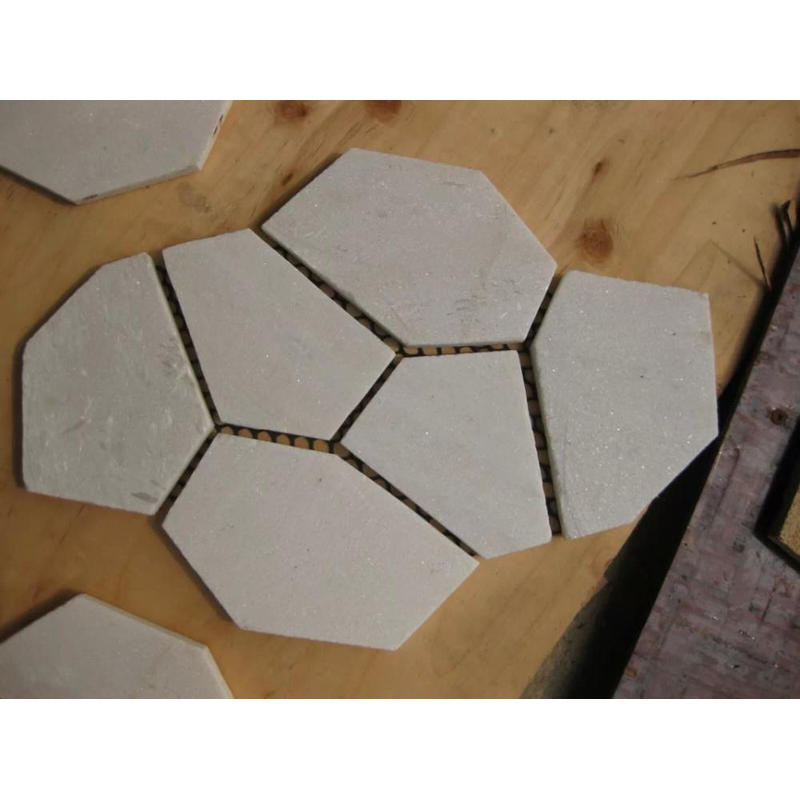
When working on a landscape design, we always try to select the material that best complements the architecture of the home, the look and feel of the space, and the goals of the people using that space. All these are important considerations, but we all have budgets; people want to know, “what’s it going to cost?”
There’s a perception that pavers are less expensive than natural stone, and that is true in most circumstances. There are a wide range of paver choices and that is the biggest variable in pricing a project. On the super low end are the pavers sold at the big box stores, but I won’t even consider specifying these. Among the “real” paver choices, the least expensive choice is usually the paver that looks most like a brick in size and shape. Techo-Bloc sells these as Atlantis and Victorien, EP Henry calls them Brick Stone and Historic Brick Stone, and many other manufacturers sell them as Holland Stone. From there, the pricing is extremely variable, with Techo-Bloc’s Monticello paver being one of the more expensive I’ve seen (but a really cool product). I se tulaga lautele, o se patio masani poʻo se auala savali e amata mai le $15 i le $22 i le sikuea sikuea faʻapipiʻi. If you’re doing a larger area like a driveway or very large, open patio, the price per square foot may end up a good bit lower because the base preparation can be done with larger machines in less time.
It’s worth mentioning that not all installers follow the same procedures when installing pavers. If you’ve ever seen a paver project where depressions have formed over time, that occurred because of poor base prep. I won’t go into the details of proper prep here, because the Inisetiute Fa'asa'o Sima Feso'ota'i is considered the authority on the subject. If you’ve gotten wildly differing quotes for a project, ask them about their base prep. Everyone’s material costs will be roughly the same, so the base is often the difference.
Autumn rose fala fa'anatura ma'a fu'a

What about stone? I’ve surprised some of my clients by presenting stone as a realistic option for their budget, when they’ve assumed it was out of reach. There are two styles of flagstone for typical installations. You have rectangular, pattern flagstone and then there’s irregular (aka broken) flagstone. The cleanest, most maintenance-free installation method is to pour a new concrete slab with the flagstone wet-laid with mortar. Mo ma'a fu'a fa'ata'ifa'atasi, o le tau fa'apipi'i e amata mai i le $18 i le $33 i le futu faatafafa. O le ma'a fu'a fa'aletonu o se faiga fa'apipi'i tele le taimi aua o le fa'amoemoe o le fa'apipi'iina lea o fasipepa ma so'oga toniga, fufusi. Mo lenei mafuaaga, o le tau fa'apipi'i mo ma'a fu'a fa'aletonu e masani lava e amata mai le $28 i le $40 i le futu faatafafa.
Afai e te fiafia i foliga o le maa ae e te manaʻo e faʻaitiitia le tau, e mafai ona e filifili mo se maʻa fuʻa i le pefu maʻa. O le fa'avae o se fa'avae ma'a fa'apipi'i fa'atasi, fa'atasi ai ma le pefu ma'a mo se fa'amoe ma le pefu ma'a i le va o so'oga o le ma'a fa'amamago. Ou te fautuaina na'o le ma'a fu'a fa'afa'afa'afa'apito mo lenei fa'aoga, aua o fasi ma'a fu'a fa'aletonu e faigofie tele ona fealua'i. Flagstone in dust, as it’s often called, can run from $17 to $23 per square foot.
Big disclaimer time: these prices are based on historical averages of jobs in which I’ve participated. These prices are also for a patio or walkway that is going on mostly level, even ground, without a lot of excavation or additional base material needed. Demolition of an existing walk or patio will cost more, as will adding steps, retaining walls, or other features. If you have a newer home, you will have a lot of disturbed soil around your foundation. If the patio is very close to the house, your installer may recommend digging down to undisturbed soil for best results. This is expensive, but well worth it.
E fa'amoemoe o le a fesoasoani nei vaega ia te oe e amata ai ona fuafua se paketi moni mo lau poloketi. Afai ei ai ni au fesili poʻo ni faʻamatalaga, faʻaoga le pusa faʻamatalaga pe fana mai ia te aʻu se imeli.